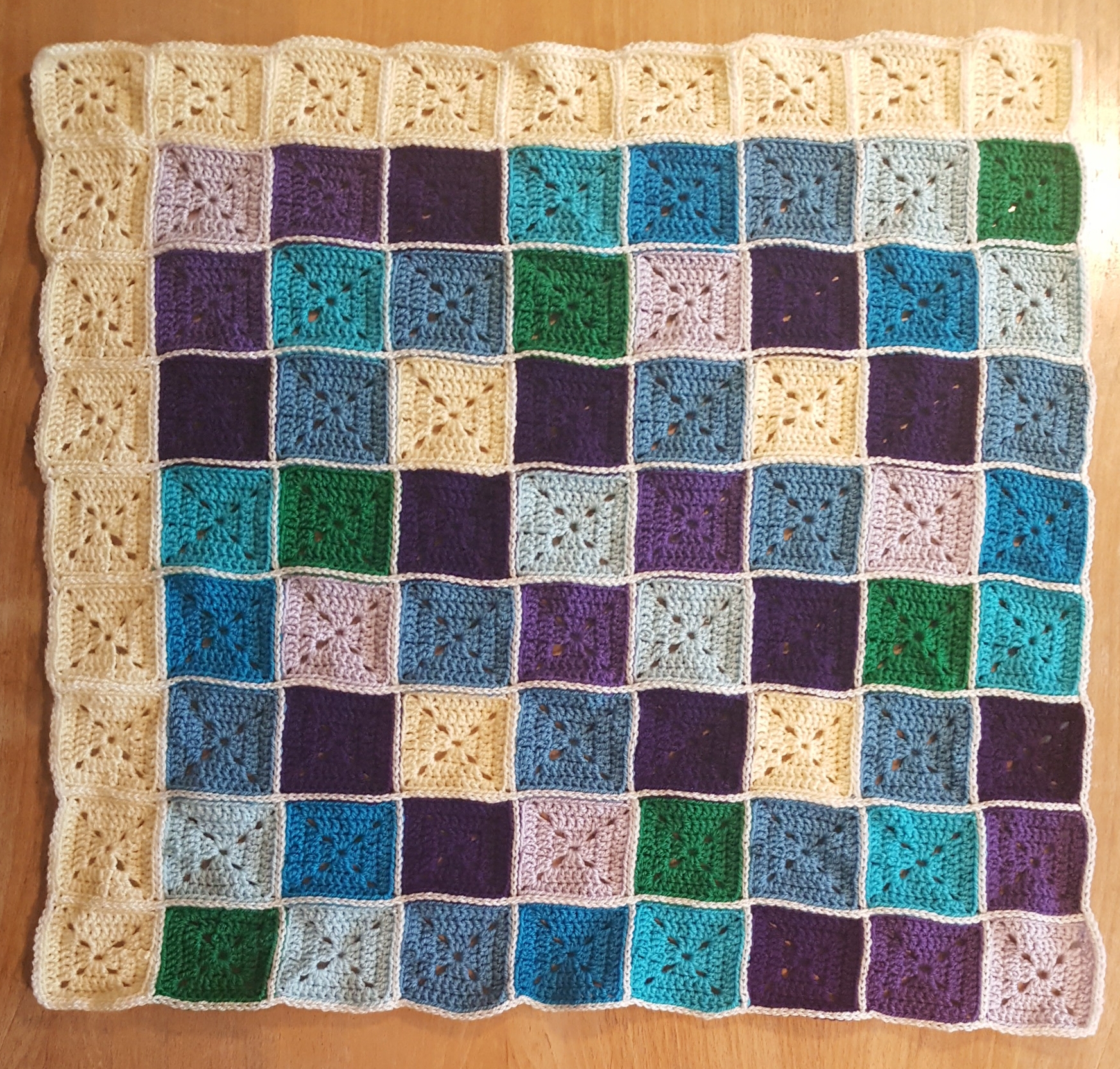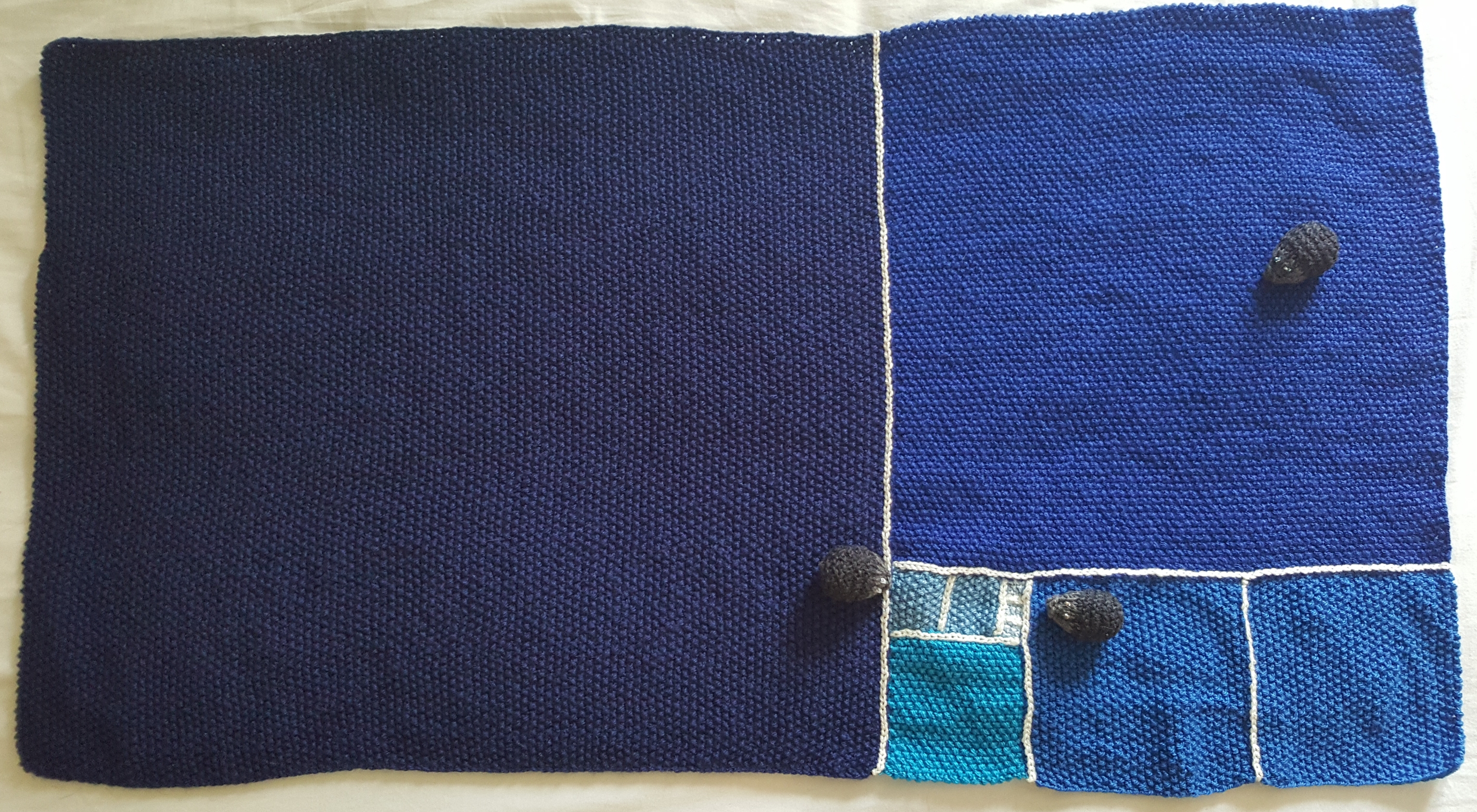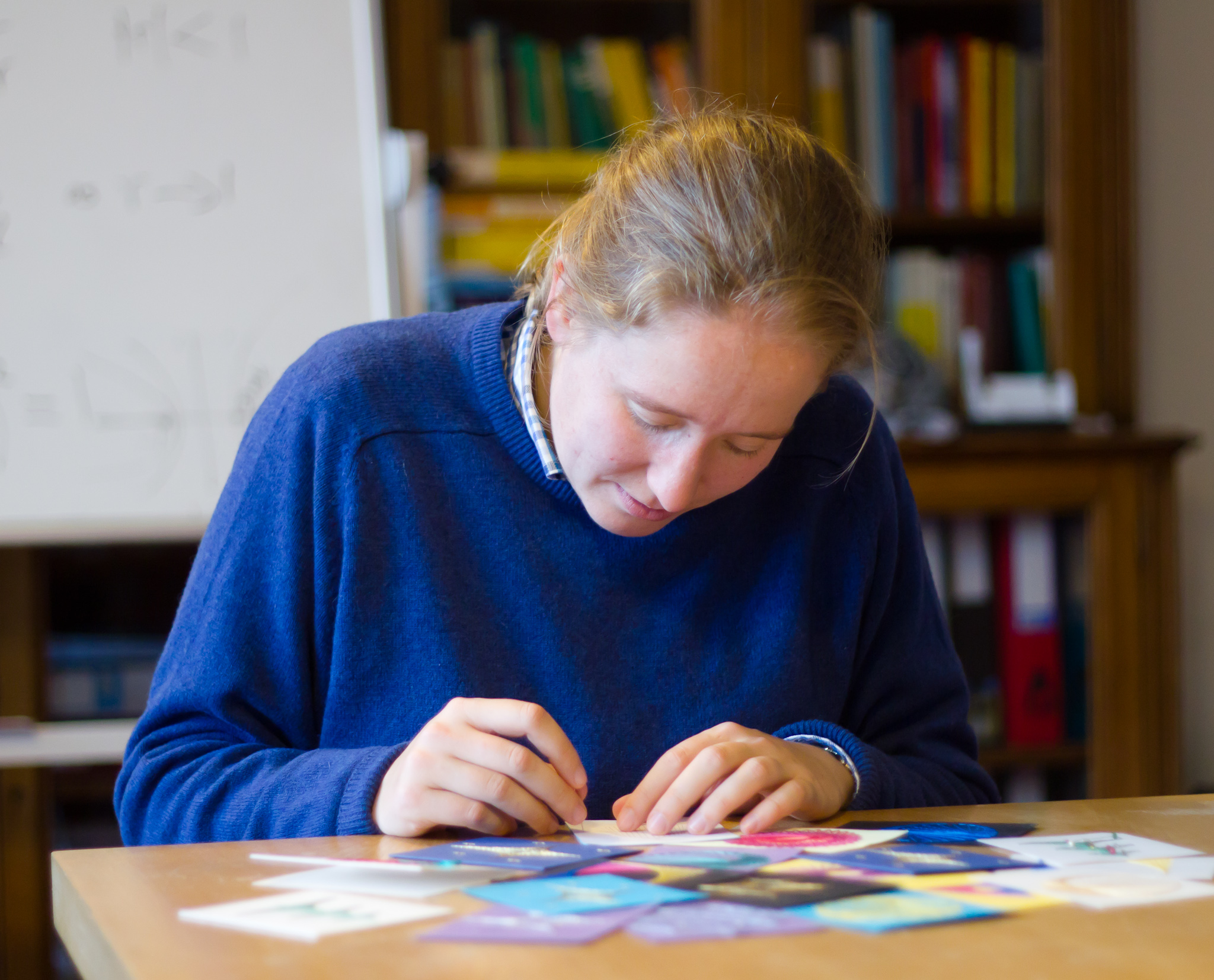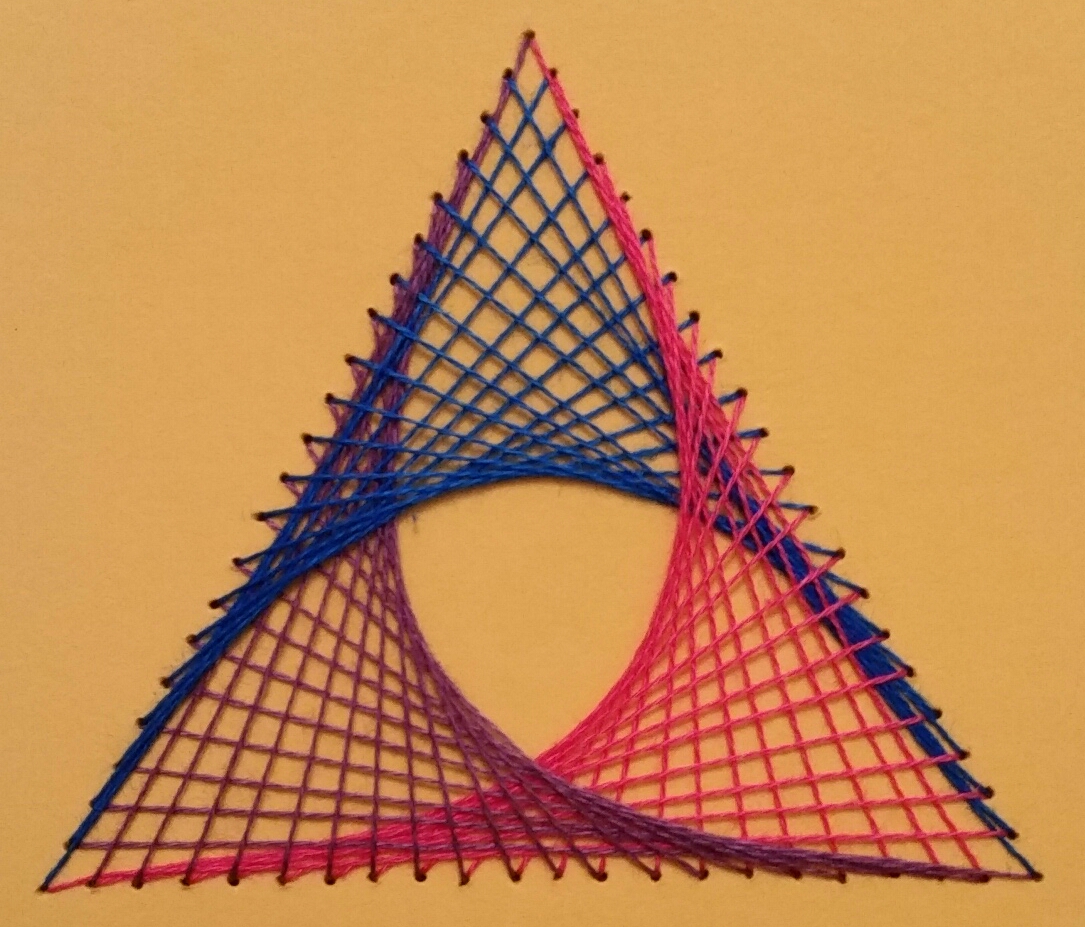

I am @VickyMaths1729 on Twitter, and that's a good place to find updates on recent projects. On this page...
Four one-minute videos related to mathematical craft, collected together by Oxford Mathematics with a soundtrack by Bach.
I've been exploring the different kinds of symmetry that are possible in a friendship bracelet or scarf with an (infinitely!) repeating design. (Technical detail: I'm only exploring 'discrete' options, so for example a plain blue bracelet wouldn't count because any translation would be a symmetry.) It turns out there are seven possible types of symmetry pattern that such a bracelet can have. This relates to the mathematical concept of a frieze group.
I've put a few photos below. On a separate page you'll find full sets of bracelets and of scarves showing all the possible types of symmetry, as well as designs you can use if you'd like to make your own, and a video I made with James Grime for MathsWorldUK about the bracelets.







In 2019, I took part in the Big Internet Math-Off. In my first pitch, I shared my crochet versions of multiplication tables in modular arithmetic. Here are some photos of these multiplication tables.










My second Math-Off pitch was about Euclid's algorithm, and including my knitted visualisation of the algorithm. Here's a picture of it.

My third and final Math-Off pitch was about my knitted scarves illustrating the distribution of prime numbers. The prime bracelets below illustrate the same mathematics in a different way.
Here are some pictures of the scarves. (In my head, the scarves are always vertical, but that doesn't fit well on a computer screen so I've rotated them here!)


The scarves are double-sided, I knitted them using a technique called double knitting. There's more about this, and more photos, on the Math-Off page.
Some people asked for the patterns. Here they are (two file formats for each).
I pretty much stopped when I ran out of yarn. If you'd like to make longer scarves, you'll want a list of prime numbers to help!
I wrote an article for issue 4 of Chalkdust magazine, on Prime jewellery. Here are some of the pictures from that piece.


In November 2015, I had a guest post on Alex Bellos's Guardian blog, on how to make mathematical Christmas cards. Below are some pictures from that blog. To make your own, you'll want to create a suitable template of dots. Of course you can make your own in any way you like (I find GeoGebra good for this), but here's a pdf with some templates in case anyone finds them helpful.





This page last updated 6 January 2022.
Vicky Neale